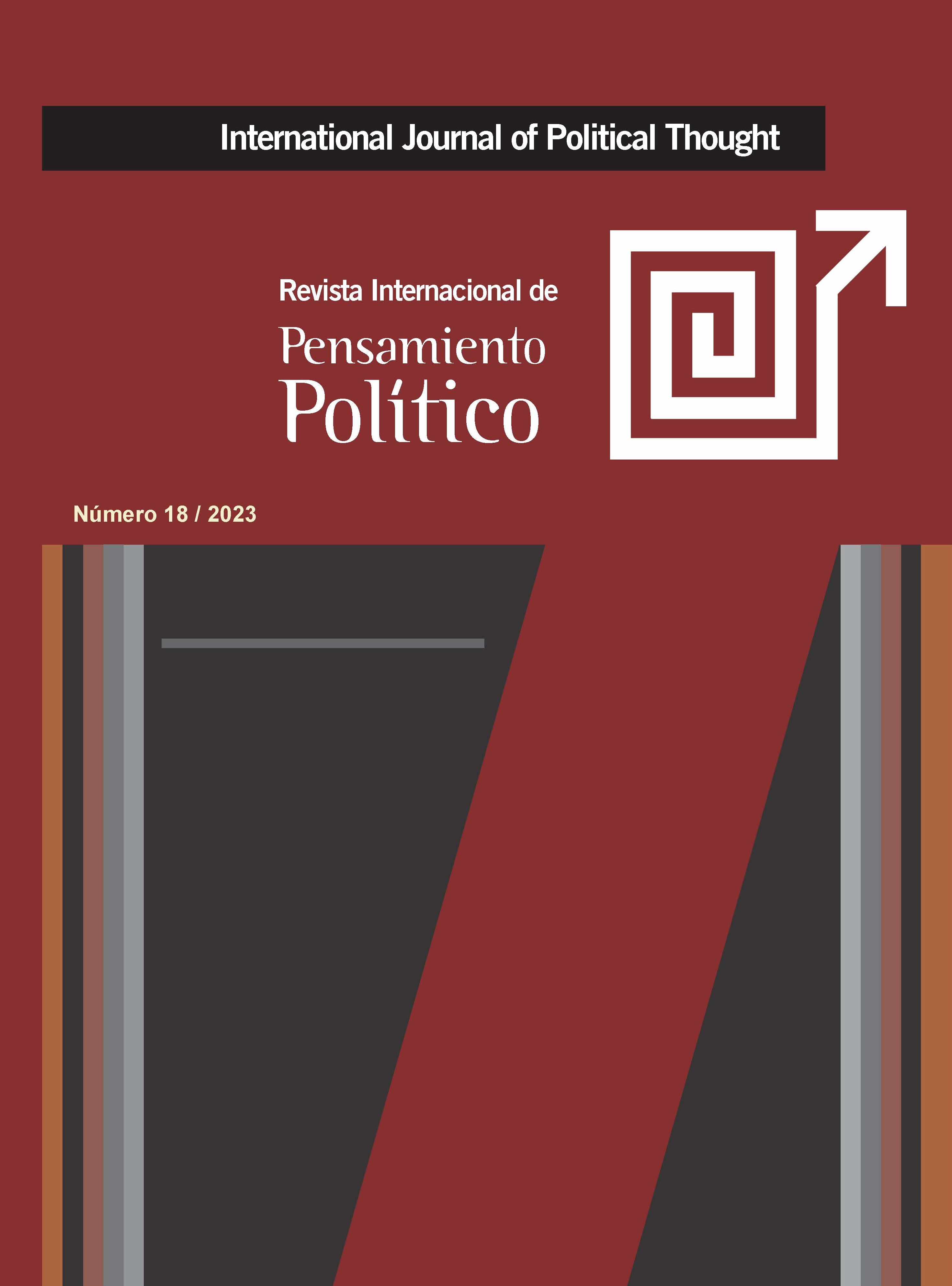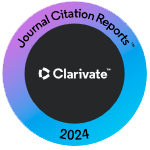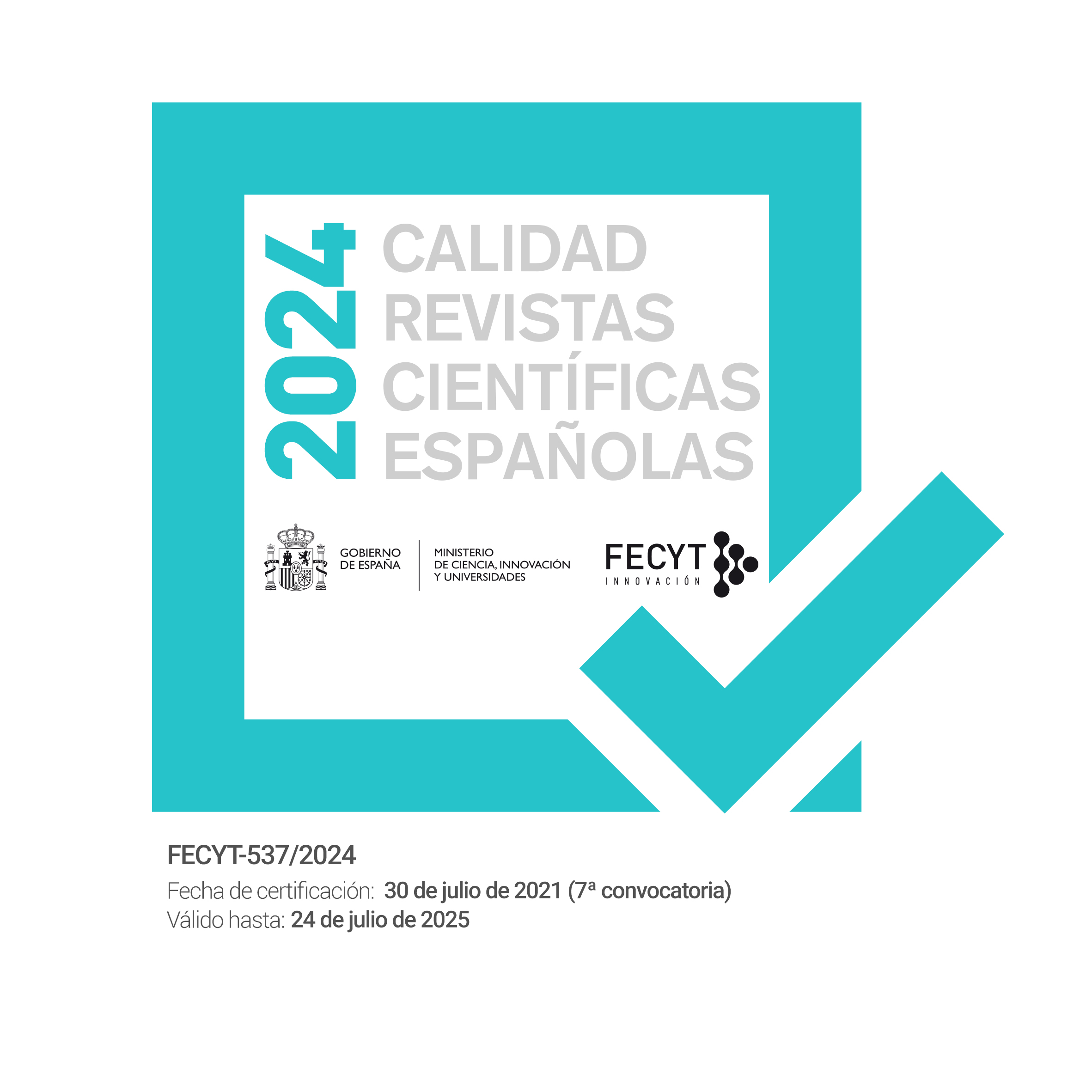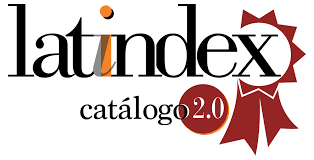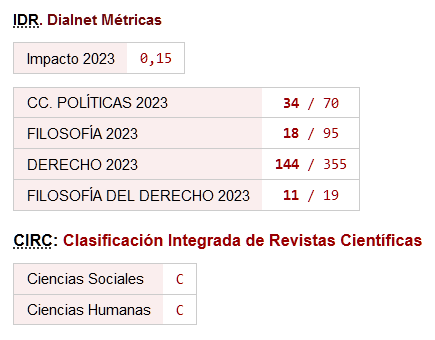Retos para la democracia en el nuevo contexto de IA e IoT
Hacia una nueva ciudadanía
DOI:
https://doi.org/10.46661/revintpensampolit.8211Palabras clave:
ciudadanía, democracia, participación, Administración Pública, inteligencia artificial, internet de las cosasResumen
El contexto de las democracias contemporáneas comenzó a cambiar hace años con el desarrollo exponencial de los medios de comunicación y de las Tecnologías de la Información y la Comunicación (TIC). A ello se sumó la irrupción de internet y, en la actualidad, la inteligencia artificial (IA) y el internet de las cosas (IoT por sus siglas en inglés) están propiciando cambios de gran calado en todos los órdenes sociales. Este artículo parte de la pregunta sobre las implicaciones del contexto marcado por la IA y el IoT para la democracia y, en concreto, para el ejercicio de la ciudadanía. Para tratar de responderla, se expone en un primer término lo que ha significado este nuevo contexto para los mecanismos de participación, poniendo el acento en los cambios en la relación entre la ciudadanía y la Administración Pública. A continuación, se exponen los retos que este nuevo escenario plantea para la Administración Pública. Por último, se discute la posibilidad de que este nuevo contexto esté determinando la configuración de un nuevo tipo de ciudadanía.
Descargas
Citas
Aguirre Sala, J. F. (2014). El potencial de los medios digitales ante la participación ciudadana tradicional y en el presupuesto participativo. Comunicación y sociedad, 22, 211-229. https://doi.org/10.32870/cys.v0i22.54
Arrieta-López, M. (2019). De la democracia a la Aretecracia: Origen, evolución y universalización. Utopía y Praxis Latinoamericana, 24(3), 115-132.
Bakshy, E., Messing, S., & Adamic, L. A. (2015). Exposure to ideologically diverse news and opinion on Facebook. Science, 348(6239), 1130-1132. https://doi.org/10.1126/science.aaa1160
Bell, P. (2022, junio 6). Public Trust in Government: 1958-2022. Pew Research Center - U.S. Politics & Policy. https://www.pewresearch.org/politics/2022/06/06/public-trust-in-government-1958-2022/
Bennett, W. L., & Segerberg, A. (2012). The logic of connective action: Digital media and the personalization of contentious politics. Information, communication & society, 15(5), 739-768. https://doi.org/10.1080/1369118X.2012.670661
Bravo, H. (2007). La Web 3.0, añade significado. Recuperado el, 15.
Canclini, N. G. (1995). Consumidores y ciudadanos. Conflictos multiculturales de la globalización. México: Grijalbo.
CerrilloI Martínez, A. (2019). La protección de datos como freno de la personalización de los servicios públicos. CLAD XXIV.
Cerrillo Martínez, A. (2019). El impacto de la inteligencia artificial en el derecho administrativo ¿nuevos conceptos para nuevas realidades técnicas? Revista General de Derecho Administrativo, 50.
Chadwick, A. (2017). The hybrid media system: Politics and power. Oxford University Press. https://doi.org/10.1093/oso/9780190696726.001.0001
Claramunt, J. C. (2019a). La democracia algorítmica: Inteligencia artificial, democracia y participación política. Revista general de Derecho administrativo, 50.
Clift, S. (2003). E-democracy, e-governance and public net-work. Publicus. net, 1-13.
Coleman, S., & Blumler, J. G. (2009). The Internet and democratic citizenship: Theory, practice and policy. Cambridge University Press. https://doi.org/10.1017/CBO9780511818271
Danielson, M., & Ekenberg, L. (2020). A Framework for Categorising and Evaluating Tools for E-democracy. The Electronic Journal of e-Government, 18(1), 69-82. https://doi.org/10.34190/EJEG.18.1.006
Downs, A., & Merino, L. A. M. (1973). Teoría económica de la democracia. Aguilar Madrid.
Guariglia, O. (2010). Democracia: Origen, concepto y evolución según Aristóteles. Doxa. Cuadernos de Filosofía del Derecho, 33, 157. https://doi.org/10.14198/DOXA2010.33.09
Hagen, M. (1997). A typology of electronic democracy. Disponible en bit. ly/2SE4521.
Harto de Vera, F. (2006). Tipologías y modelos de democracia electrónica. Revista de Internet, Derecho y Política, 2, 32-44. https://doi.org/10.7238/idp.v0i2.385
Hoff, J., Horrocks, I., & Tops, P. (2000). Democratic governance and new technology. Routledge.
Loader, B. D., & Mercea, D. (2011). Networking democracy? Social media innovations and participatory politics. Information, communication & society, 14(6), 757-769. https://doi.org/10.1080/1369118X.2011.592648
Márquez Fernández, J. M., Vázquez Martínez, R., Martínez López, M., & Roldán Cruz, N. (2013). Estudio de la demanda y uso de Gobierno Abierto en España. Madrid: Observatorio Nacional de las Telecomunicaciones y de la Sociedad de la Información.
Mattos Barros, M. L. (2018). Diseño e implementación de un sistema automático de clasificación de mensajes intercambiados entre la ciudadanía y el Ayuntamiento de València. https://riunet.upv.es/handle/10251/111903
O’Reilly, T. (2010). What is Web 2.0: Design patterns and business models for the next generation of software, 2005.
Pariser, E. (2011). The filter bubble: How the new personalized web is changing what we read and how we think. Penguin.
Petit, M. (2018). Por una crítica de la razón algorítmica. Estado de la cuestión sobre la inteligencia artificial, su influencia en la política y su regulación. Quaderns del CAC, 44, 5-15.
Prats, J., & Del Álamo, O. (2003). Democracia electrónica: Concepto, tipos y posicionamientos. Barcelona: Instituto Internacional de Gobernabilidad de Cataluña.
Prior, M. (2013). Media and political polarization. Annual Review of Political Science, 16, 101-127. https://doi.org/10.1146/annurev-polisci-100711-135242
Przeworski, A. (1998). Democracia y representación. Revista del clad Reforma y Democracia, 10, 7-32.
Pew Research Center. (2019). Public trust in government: 1958-2019. Retrieved from https://www.pewresearch.org/politics/2019/04/11/public-trust-in-government-1958-2019
Shirky, C. (2011). The political power of social media: Technology, the public sphere, and political change. Foreign affairs, 28-41.
Smith, A. (2017). Innovación social, democracia y makerspaces. Revista española del tercer sector, 36, 49-74.
Subirats, J. (2013). Internet y participación política. Revista de Ciencias Sociales, 26(33), 55-72.
Sunstein, C. R. (2018). # Republic: Divided democracy in the age of social media. Princeton University Press. https://doi.org/10.1515/9781400890521
Tewksbury, D., & Rittenberg, J. (2012). News on the Internet: Information and Citizenship in the 21st Century. Oxford University Press. https://doi.org/10.1093/acprof:osobl/9780195391961.001.0001
Van Der Henst, C. (2005). ¿Qué es la Web 2.0? Recuperado el, 15, 95-106.
Van Dijk, J. (2000). Models of democracy and concepts of communication. Digital democracy: Issues of theory and practice, 54, 69. https://doi.org/10.4135/9781446218891.n3
Velasco Rico, C. I. (2020). Personalización, proactividad e inteligencia artificial. ¿Un nuevo paradigma para la prestación electrónica de servicios públicos? http://repositori.upf.edu/handle/10230/43824, https://doi.org/10.7238/idp.v0i30.3226
Vercelli, A. (2013). La participación ciudadana en la era digital. Análisis de las tecnologías digitales que se utilizan para la gestión de derechos ciudadanos. Virtualis, 4(7), Article 7. https://doi.org/10.2123/virtualis.v4i7.72
Vera, F. H. (2006). Tipologias y modelos de democracia electrónica.
Žižek, S. (2020). Pandemic!: COVID-19 shakes the world. John Wiley & Sons. https://doi.org/10.2307/j.ctv16t6n4q
Descargas
Publicado
Cómo citar
Número
Sección
Licencia
Derechos de autor 2023 Cristina Moreno, Adrián Megías, Alejandro Fdez del Rio

Esta obra está bajo una licencia internacional Creative Commons Atribución-NoComercial-CompartirIgual 4.0.
Política de acceso abierto
Se permite el acceso libre y abierto de cualquier interesado a todos los contenidos de los números de la revista, sin costo alguno, pudiendo imprimir y trasladar todos los artículos, con la única condición de precisar la fuente y la autoría.
La revista: a) no cobra a las autorías costes por el procesamiento de los artículos ni por el envío de los mismos, b) mantiene el copyright para los autores sin restricciones, c) facilita a los autores conservar sus derechos de publicación sin limitaciones.
La Revista Internacional de Pensamiento Político es una obra original del Laboratorio de Ideas y Prácticas Políticas de la Universidad Pablo de Olavide. Todos los artículos incluidos en la Revista son obra original de sus respectivas autorías. Esta Revista se ofrece libremente a la comunidad científica y académica sin coste alguno y libera los contenidos de acuerdo a la licencia "Reconocimiento-NoComercial-CompartirIgual 4.0 CC BY-NC-SA" del proyecto Creative Commons dispuesta en la siguiente url: https://creativecommons.org/licenses/by-nc-sa/4.0/legalcode
Si deseas traducir o compilar alguno de los artículos aquí disponibles, por favor, ponte en contacto

